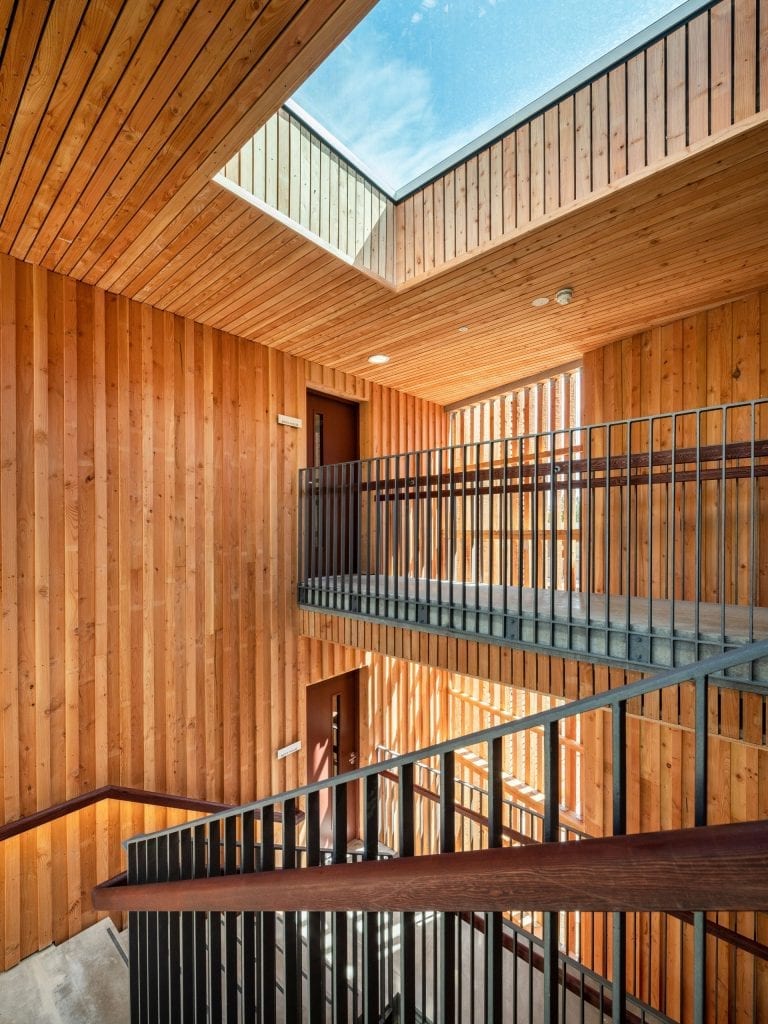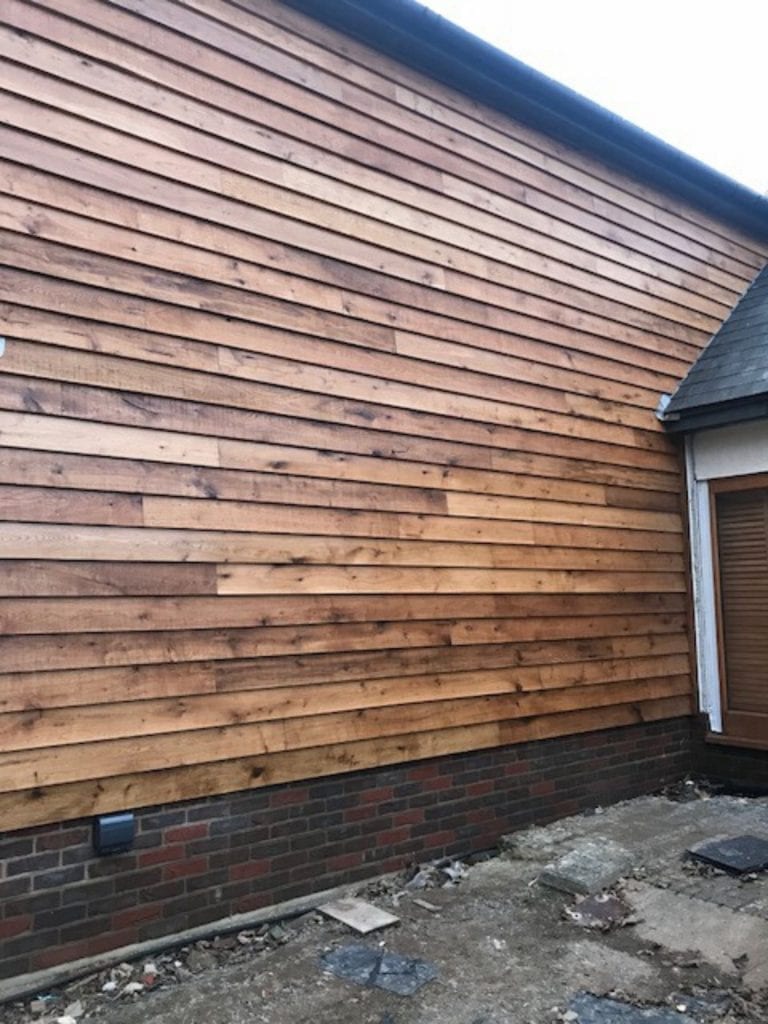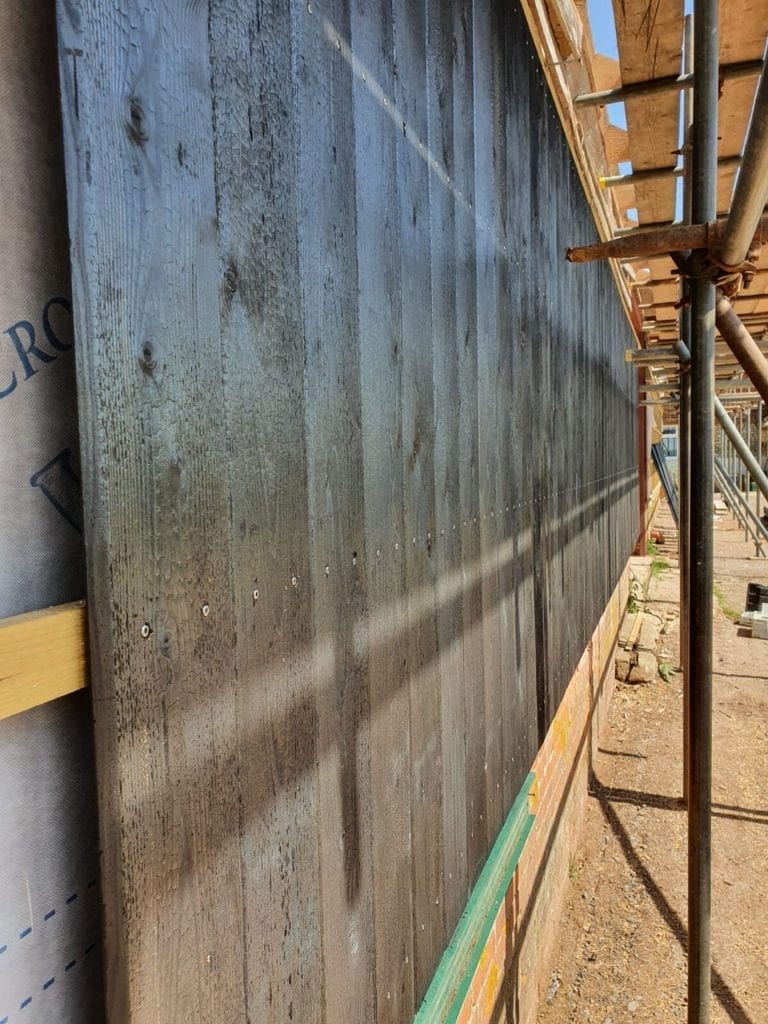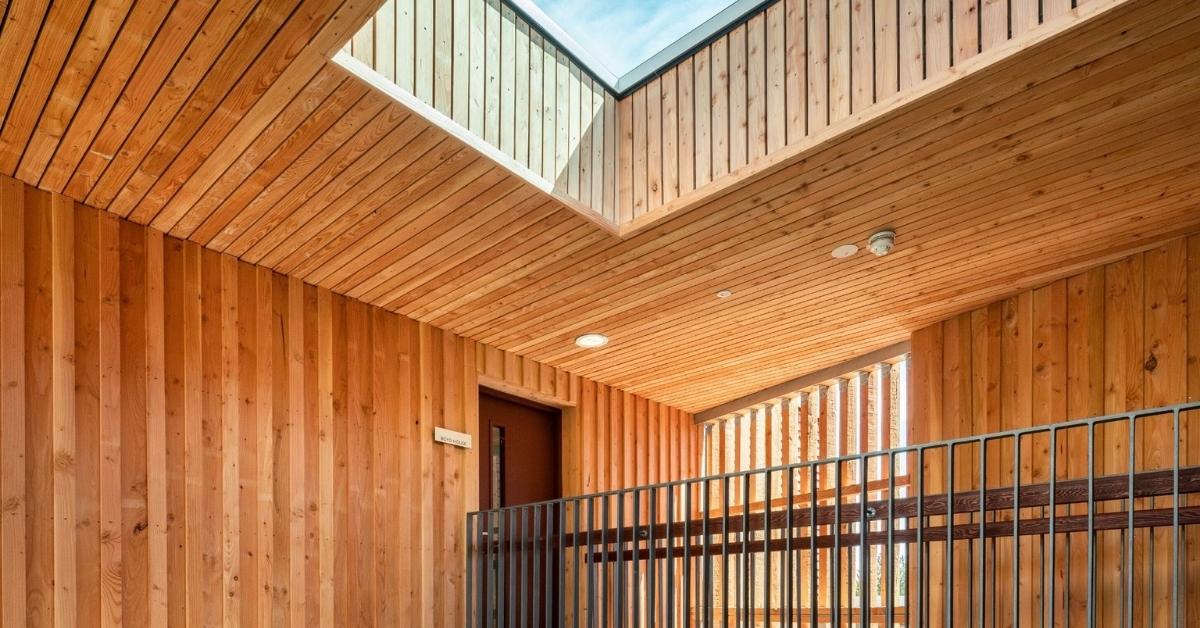External Timber Cladding For Sale UK
Originally designed as a `final jacket’ to improve thermal insulation and resistance to inclement weather, external cladding also serves distinct appearance purposes. This outer layer to buildings can be vertical or horizontal and can consist of materials from timber to brick and corrugated metal.
At WL West, we offer a variety of woods (machined or fresh sawn) and a range of different surface finishes to stylise timber cladding to an architect’s specifications.


A more traditional Feather Edge Oak Cladding. Supplied to a private customer in Blendworth, Hampshire.
The history of timber cladding
In 500 AD, the Vikings and the Anglo-Saxons shared the practice of using timber to clad their buildings. The sixteenth century, by contrast, saw a rise in weatherboarding (made of thinner planks); this was a more cost-effective solution since wood, while widely available, was expensive and difficult to transport. By the eighteenth century and the Industrial Revolution, housing materials with cheaper distribution methods (such as bricks transported by rail) started to replace timber. Eventually, modernist twentieth century external cladding could consist of any housing material and few buildings were left with their original wooden outer layer.
Nowadays, with much improved engineering to the machinery involved and infinite options for transport available, timber cladding has made a comeback beyond mere Swiss chalets. Stylised wood cladding can bring a unique look and feel to any project, whether it’s your new dream home or one of Surrey’s beautiful cladded barns.
Why wooden cladding is coming back
With today’s fascination for the Scandinavian hygge lifestyle and a worldwide interest in eco-friendly measures, we’ve seen a rise in interest for fresh-sawn larch, Douglas fir, homegrown red cedar and oak cladding. Imported Siberian larch is currently the most popular for moulded profile wooden cladding. The weather resistance and added insulation makes it a popular feature of agricultural buildings as well.
Given the nature of this method and the well-known chimney effect (where the space behind the cladding where rain runs down can draw hot air up like a chimney), it often comes under scrutiny in fire assessments.
However, much progress has been made with regards to fireproofing timber cladding. Recently, we worked on a project involving charred Siberian larch (pictured below); this Siberian larch was chosen over cedar for its greater durability as the charring converts its sugars, making it less palatable to fungi and insect attack. The overall effect of the burnt wood on beautiful structures combines the beauty of two philosophies: Scandinavian hygge, and Japanese Wabi-Sabi, which can be described as `incomplete’, or `perfectly imperfect’.

Why use WL West for timber cladding?
Forest-friendly and carbon neutral, our timber is sourced responsibly just over the channel from our suppliers in northern France, Finland, and Russia, as well as our local estate just over the fence.
In line with our philosophy of service as timber merchants and experts in our field, we remain involved to make suggestions and offer insight on each custom project; this is to ensure that the architects we work with feel supported in a manner that is insightful and constructive.
If you would like further information on how to best choose your cladding material, give us a call, or drop us an email. We’d love to hear from you.
For more news, tips, and up-to-date projects, follow us on Instagram, Twitter, and Facebook.


